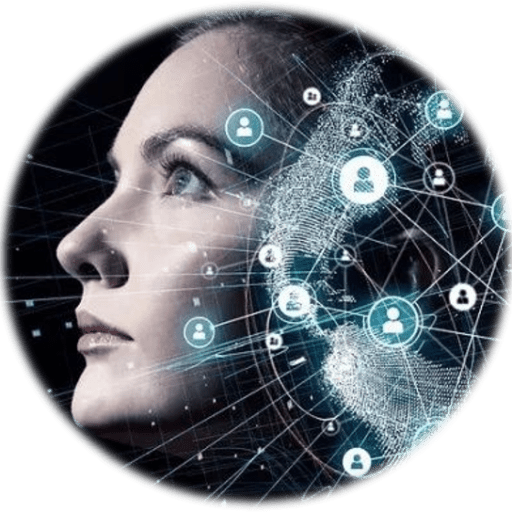In the next 20-30 years, machine self-learning may deliver an intelligent agent, which will surpass any human being in every skill or task. When AI reaches such capability, it will become Artificial General Intelligence (AGI), or Superintelligence, the term used here after Nick Bostrom’s book “Superintelligence: Paths, Dangers, Strategies”. But what is Superintelligence? To put it simply, it is the most advanced, mature form of Artificial Intelligence (AI). It is formally defined as “a technologically-created cognitive capacity far exceeding all human intelligence”. Such a smart intelligent entity will be capable of rapidly reproducing itself. It will also be beyond human control. Within a few months or even weeks, it may reach Singularity – the so-called runaway point, beyond which it may be impossible for any human to comprehend the rationale behind its decisions and actions.
There is no agreement on when Superintelligence may definitely arrive. The Future of Humanity Institute at Oxford University did a research in May 2017 asking 1,634 AI researchers to complete a survey on when AI will outperform humans in various areas. 352 researchers responded and their aggregate view is as follows (Asian respondents expected these dates to be much sooner than North Americans):

- By 2024 – translating languages
- By 2026 – writing high school essays
- By 2027 – driving trucks
- By 2031 – working in retail
- By 2049 –writing a bestselling book
- By 2053 – working as a surgeon
- By 2062 – 50% chance of AI outperforming humans in all tasks
At the time of updating this section, in 2021, we can see that the first three milestones have already been achieved. If you consider Amazon’s warehousing AI system or teh Amazon ‘GO’ shops, we are almost there. Writing a bestselling book with a GPT-3 AI-agent, is also nearly there. Working as a surgeon, happens now in several areas of medicine thanks to AI robots such as Da Vinci, although they are still guided by humans. However, we are nowhere near to AI outperforming humans in all tasks yet.
Perhaps the best known predictions are those made by Ray Kurzweil, currently the Chief Technologist at Google and one of the most prominent futurists, who has already proven over the previous 30 years that his predictions were largely correct. In an interview Kurzweil had with Futurism on 3rd October 2017, he confirmed his earlier prediction that AI will match human intelligence (in narrow subjects, like medicine) by 2029. He also confirmed that: “2029 is the consistent date I have predicted for when an AI will pass a valid Turing test and therefore achieve human level of intelligence. I have set the date 2045 for the ‘Singularity’ which is when it will multiply its effective intelligence a billion-fold by merging with the intelligence we have created.” For Ray Kurzweil, the process towards this singularity has already begun. If you think that Singularity cannot happen by 2045, then these two latest inventions from Google should make you think.
First, was the invention announced by Google at its I/O conference in May 2017, which gives quite a considerable boost to those impatiently awaiting the arrival of Superintelligence. It was it latest invention – AutoML (Auto Machine Learning). The Google team came up with a machine learning software that can create self-learning code. The system runs thousands of simulations to determine, which areas of the code can be improved. It then makes the changes and continues the process until its goal is reached. The result was that AutoML is better at coding machine-learning systems than the researchers who made it. In an image recognition task it reached record high 82 percent accuracy. Even in some of the most complex AI tasks, its self-created code is superior to humans. Google’s AutoML could develop a superior image recognition system within a few weeks, what would have taken months for most brilliant AI scientists. But in December 2017, just six months later, the Department of Energy’s Oak Ridge National Laboratory (ORNL), using the most powerful supercomputer in the US, have developed an AI system that can generate neural networks as good, if not better, than any developed by a human in less than a day.
The second invention, announced in the journal “Nature” on 19/10/2017, will probably be viewed in the future as a very significant milestone on the path to Superintelligence and Singularity. Barely a year after Google’s AlphaGo beat Lee Sedol, the Grandmaster in the Chinese game GoGo, which itself was considered a very important breakthrough in AI, a vastly superior AI agent called AlphaGoZero (AGZ) beat GoGo Masters by 100 games to 0. The original AlphaGo had the benefit of learning from thousands of previously played Go games against human players and against itself. AGZ, on the other hand, received no help from its human handlers, and had access to absolutely nothing aside from the rules of the game. Using “reinforcement learning,” AGZ played against itself 4.9 million games, starting from a very basic level of play without any supervision or use of human data (AlphaGo, by comparison, had 30 million games). The self-learning capability allowed the system to improve and refine its digital brain, known as a neural network, as it continually learned from past experience. In effect, AGZ was its own teacher. It took for AGZ just 4 hours to self-learn chess to such a degree that it beat the world class champions. Additionally, this technique is so powerful because it is no longer constrained by the limits of human knowledge. Instead, it can learn from a “clean slate”.
The way in which AGZ teaches itself is so significant for AI because it shows that once AI gets full knowledge about the real-world problem to be solved then the power of reinforcement learning will deliver the result. Gradually such AI will become Artificial General Intelligence (AGI) i.e. Superintelligence, finding solutions and strategies that are beyond human capabilities. The most surprising in this story is how short was the time between the AlphaGo’s win and an absolute supremacy of AGZ over GoGo Masters. That’s what exponential progress is about. Therefore, my main assumption is that we shall have a fully mature Superintelligence by 2050, just in three decades.
From the perspective of Superintelligence, there is another type of intelligence where humans may still excel, called ‘emotional intelligence’. This refers to “an individual’s ability to understand and be aware of his own emotions, as well as those of people around him. This ability enables him to handle social interactions and relationships better.”
A true Superintelligence, if it is to be fully compared with human intelligence, must have such a capability. Recently, some progress in this direction has already been made. In May 2017, an “emotional chatting machine” has been developed by scientists, signalling the approach of an era, in which human-robot interactions are seamless and go beyond purely functional. The chatbot, developed by a Chinese team, is seen as a significant step towards the goal of developing emotionally sophisticated robots. The ECM, as it is known, was able to produce factually coherent answers whilst also filling its conversation with emotions such as happiness, sadness or disgust.
In just over 3 years since the above summary of AI achievements was written, we have made an incredible progress in many areas, especially in Natural Language Processing, Image Recognition, or autonomous cars.
Superintelligence may potentially become the most dangerous adversary of Humanity to which we dedicate a lot of space on this website. However, it can also become very benevolent and friendly agent that Humanity will badly need to fight other existential risks and help turn our civilisation on the path of immense prosperity.
You can view Sustensis video and presentations on this subject in the left sidebar.

Comments